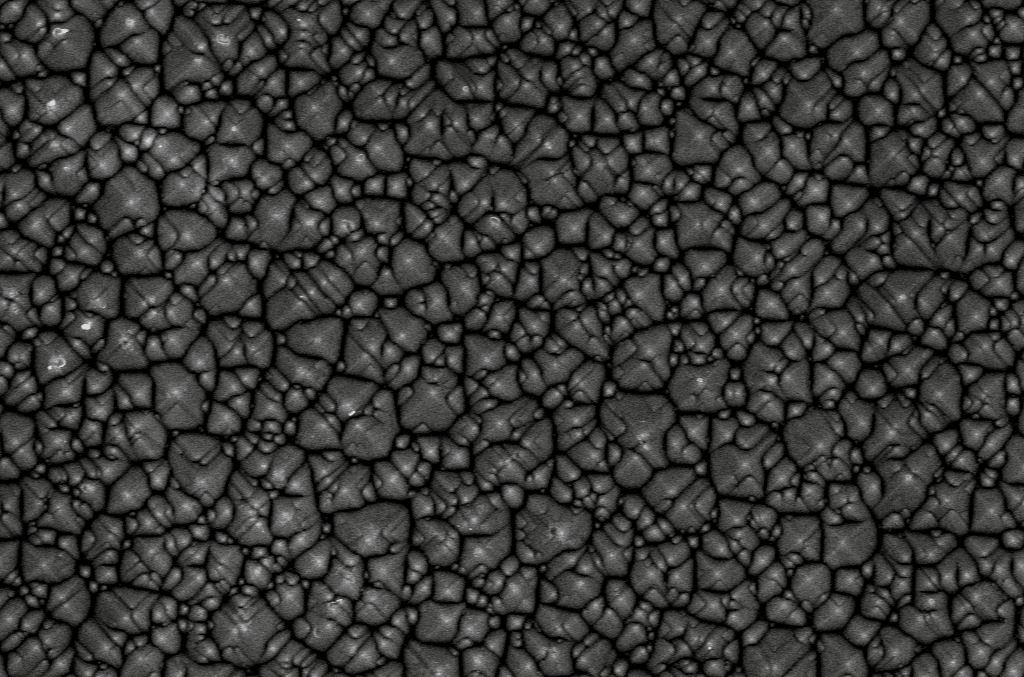A touch of zirconium to better catch the sun
Zirconium-doped transparent electrodes boost the power conversion efficiency of perovskite-based tandem solar cells.
Transparent conductive films that let through a broader range of the solar spectrum have been developed by KAUST and are set to increase the power conversion efficiency of perovskite-based multijunction solar cells beyond 30 percent. Improved efficiency makes these devices more commercially appealing.
The power conversion efficiency of perovskite solar cells has drastically risen over the past decade. Tandem solar cells—those that combine a wide bandgap, a semitransparent perovskite top cell and a low bandgap silicon bottom cell—have achieved maximum power conversion efficiencies of 28 percent, outperforming single-junction silicon solar cells.
Performance of perovskite-based tandem solar cells rests on the ability of the top cell to harvest the blue portion of the solar spectrum while letting through the near-infrared light. Conversely, the bottom cell only needs to absorb near-infrared light. "The semitransparency of the top cell depends on the optical bandgap and thickness of the perovskite thin film as well as the characteristics of the transparent electrodes, especially their sun-exposed side," explains study lead Stefaan De Wolf from the KAUST Solar Center.
Ideal transparent electrodes exhibit high conductivity and broadband transparency, which reduces energy losses and enhances device performance through the entire solar spectrum. Indium tin oxide is the go-to transparent conductive material for solar cells, but its conductivity–transparency tradeoff is not ideal. This tradeoff is manifest through only moderate electron mobility and parasitic absorption—a phenomenon that competes with the light absorption responsible for current generation. Metals, such as titanium and molybdenum, have been used as dopants for indium-oxide-based electrodes to improve this tradeoff, but their elevated processing temperatures make them unsuitable for perovskite-based tandem cells.
As an alternative De Wolf, Erkan Aydin and colleagues from KAUST and the University of Twente have now fabricated transparent electrodes using zirconium-doped indium oxide (IZRO). “This material suits our perovskite-based tandem solar cells because of its distinctive properties, especially its wide bandgap exceeding 3.5 electron-volts, high conductivity and high near-infrared transparency,” Aydin says.
Unlike their zirconium-free counterparts, the initially amorphous IZRO films formed large crystals when heated to 200 degrees Celsius for 25 minutes under ambient conditions, suggesting that zirconium doping promotes crystallinity. The annealed films presented higher transparency and conductivity than their untreated precursors, which directly connects crystallinity with electrode performance.
When incorporated in perovskite-silicon tandem cells, the IZRO electrodes enhanced the response of the bottom cell compared to their conventional counterparts. This increased the power conversion efficiency from 23.3 to 26.2 percent, “A remarkable improvement for mechanically stacked tandem solar cells,” Aydin says.
The team is working on further implementing such electrodes in monolithically connected cells and improving the device performance by optimizing optical design.
References
- Aydin, E., De Bastiani, M., Yang, X., Sajjad, M., Aljamaan, F., Smirnov, Y., Hedhili, M.N., Liu, W., Allen, T.G., Xu, L., Van Kerschaver, E., Morales-Masis, M., Schwingenschlögl, U.& De Wolf, S. Zr-doped indium oxide (IZRO) transparent electrodes for perovskite-based tandem solar cells. Advanced Functional Materials 29, 1901741 (2019).| article

